It has been three years when the dance of death by covid-19 started in the in New York City at the beginning of 2020. Covid-19 had arrived in the continental United States a few months before reaching NYC. During those days, I had come across the following poem, which quite neatly described our relationship with the mask:
Great Facial Mask
Now is the Time to Tell You That I love you
My Dearest
My Little Prison
Take Custody of My Mouth
By: Yu Jian
(Translated from Mandarin)
The airways and TV Channels were filled with news of people getting morbidly sick and dying. Cremation of dead bodies in USA had become a norm regardless of religious belief of the deceased. The onslaught of the Covid-19 virus, a ball with thorns which could only be seen with a microscope, had completely altered the rituals for the dead and rhythms of the living.
The distraught families of the dead could not bid farewell in person. Eulogies were being delivered on networks like Zoom. The Post Office had become the main conduit for transporting ashes in a specially designed box with the bright orange label code 139: Cremated Remains. The boxes could arrive in damaged condition, delivering more grief to the families of the deceased. Even after a period of more than a year, very little was known about the virus. Any misstep and we would have run the risk of turning into molecular dust. The prison of mask was sweet freedom from the primordial fear of death.
By June 2020, the unceasing attack of virus had given rise to pandemic fatigue everywhere. It was further complicated by rumors and misinformation. We were told to sanitize our groceries. President Trump would share his own suggestions of using bleach as medical advice. A diffused fog of sentimental disquiet had settled over the masses. To escape from the melancholy, I would sit so many times to write, the words would appear everywhere around me, but before I could capture and taste their flavor, they would float away.
Also in the summer, WhatsApp, the news, and other forms of communication had fallen prey to sharing misinformation and hate, and unfortunately the public easily attached to this. It would hurt me to hear how people would blame and hurt other ethnic groups for the unfortunate circumstances we were seeing. This was an unfortunate ubiquitous pool of hate.
By early 2021, vaccines produced by Pfizer and Moderna had become available. The citizens with compromised immune system and seniors were the first one to get the vaccine. There was a lot of resistance against the vaccine especially among conservatives. By this time, hundreds of thousands had fallen by Covid-19. Senior citizens made up a big percentage of victims. Italy, UK, Canada, and Russia also lost a lot of lives due to the Covid-19.
In 2020, India relatively speaking escaped the scrouge during the early part of the year. The cases started emerging in the last quarter of 2020, despite people in India having made all kind of boastful statements about Indians having higher level of immunity. By March 2021, the situation in India changed and the disease spread like a wildfire. Our ego was busted like pricked balloon. The Indian system was not prepared, and thousands of people died waiting for the treatment. There was shortage of oxygen and vaccines in hospitals and nursing homes. There were lines of dead bodies waiting for cremation on cremation grounds. People in cities like Delhi were abandoning the bodies of the dead.
It was sad and unfortunate to see the abandonment of migrant labor in the big cities of India. The projects they were working on in the cities were halted, and there were no arrangements made for them. They were made to walk hundreds of miles back to their villages. Collecting their tortured lives, the crowds kept growing like nails and hair of dead people. They were sleeping on the railroad tracks and by the roadside. Hungry and often beaten by cops, their cries were stuck in their skulls.
By late 2021, with focusing all the available energies to control the disease, the Indian government brought the pandemic under substantial control. Most of the countries containing the virus had enforced strict curfews and isolation. Human beings worldwide were dictated to maintain social distancing and avoid touching each other. By late 2021, due to isolation generated acute stress incidences of psychological illnesses became very common worldwide. Touch is the most beautiful and important wordless expression of love and affection which became a taboo.
The evolution of the virus and the resulting pandemic has shown us that there is a simmering discord between human action and nature. We have unleashed the wrath of virus on us by our own cynical treatment of nature and have exposed our frailties. The accumulated result of our actions brought on the wrath of the virus, which emptied our schedules. We were reminded that the” future” resists the timeline.
Like fish in the water, our being is in time. Carrying the burden of the enigma of the memory and anxiety of future, we seek deliverance from suffering while swimming in the sea of time. Unfortunately, the universe exists according to the order of time, and suffering is an integral part of it. In Hindu mythology, the dance of Shiva symbolizes flowing of time. Shiva himself is time, and his dance incorporates moves of joy and pain beautifully.
In cosmic dance, things evolve in their own time, and their “times” evolve relative to each other. The world is interwoven with dances made to different rhythms of things. It is like millions of Shiva’s dancing on different rhythms giving rise to events and their accumulated effect. The virus evolved according to the order of time and gave rise to events leading to millions of deaths.
We know that the universe is moving on irreversibly. No event can or will be replicated, even Shiva will not repeat old dance. He is time but still bound by its nature. We came into this form around 70,000 years ago. Like previous species, our time is limited. According to Kafka, the purpose of life is that it ends. Therefore, the hope of immortality is hollow. Before it ends, contrary to Kafkesque thought, I believe a meaning can be created. I would like to live my remaining years by principles of Buddhism of Non- Judgement, bearing witness, and compassion. We are joined in the bond of impermanence and death will come. Death does not know a good death from bad, so wishing for one kind over other is fog of mind. I wish to carry my life with dedicated heart like souls in Dante’s Purgatory carrying loads of dead and living souls not to simply suffer but to take burden of life lightly. This is the path of love where one spreads joy like shimmering sun rays on rapidly moving water towards the sea.
Great Facial Mask
Now is the Time to Tell You That I love you
My Dearest
My Little Prison
Take Custody of My Mouth
By: Yu Jian
(Translated from Mandarin)
The airways and TV Channels were filled with news of people getting morbidly sick and dying. Cremation of dead bodies in USA had become a norm regardless of religious belief of the deceased. The onslaught of the Covid-19 virus, a ball with thorns which could only be seen with a microscope, had completely altered the rituals for the dead and rhythms of the living.
The distraught families of the dead could not bid farewell in person. Eulogies were being delivered on networks like Zoom. The Post Office had become the main conduit for transporting ashes in a specially designed box with the bright orange label code 139: Cremated Remains. The boxes could arrive in damaged condition, delivering more grief to the families of the deceased. Even after a period of more than a year, very little was known about the virus. Any misstep and we would have run the risk of turning into molecular dust. The prison of mask was sweet freedom from the primordial fear of death.
By June 2020, the unceasing attack of virus had given rise to pandemic fatigue everywhere. It was further complicated by rumors and misinformation. We were told to sanitize our groceries. President Trump would share his own suggestions of using bleach as medical advice. A diffused fog of sentimental disquiet had settled over the masses. To escape from the melancholy, I would sit so many times to write, the words would appear everywhere around me, but before I could capture and taste their flavor, they would float away.
Also in the summer, WhatsApp, the news, and other forms of communication had fallen prey to sharing misinformation and hate, and unfortunately the public easily attached to this. It would hurt me to hear how people would blame and hurt other ethnic groups for the unfortunate circumstances we were seeing. This was an unfortunate ubiquitous pool of hate.
By early 2021, vaccines produced by Pfizer and Moderna had become available. The citizens with compromised immune system and seniors were the first one to get the vaccine. There was a lot of resistance against the vaccine especially among conservatives. By this time, hundreds of thousands had fallen by Covid-19. Senior citizens made up a big percentage of victims. Italy, UK, Canada, and Russia also lost a lot of lives due to the Covid-19.
In 2020, India relatively speaking escaped the scrouge during the early part of the year. The cases started emerging in the last quarter of 2020, despite people in India having made all kind of boastful statements about Indians having higher level of immunity. By March 2021, the situation in India changed and the disease spread like a wildfire. Our ego was busted like pricked balloon. The Indian system was not prepared, and thousands of people died waiting for the treatment. There was shortage of oxygen and vaccines in hospitals and nursing homes. There were lines of dead bodies waiting for cremation on cremation grounds. People in cities like Delhi were abandoning the bodies of the dead.
It was sad and unfortunate to see the abandonment of migrant labor in the big cities of India. The projects they were working on in the cities were halted, and there were no arrangements made for them. They were made to walk hundreds of miles back to their villages. Collecting their tortured lives, the crowds kept growing like nails and hair of dead people. They were sleeping on the railroad tracks and by the roadside. Hungry and often beaten by cops, their cries were stuck in their skulls.
By late 2021, with focusing all the available energies to control the disease, the Indian government brought the pandemic under substantial control. Most of the countries containing the virus had enforced strict curfews and isolation. Human beings worldwide were dictated to maintain social distancing and avoid touching each other. By late 2021, due to isolation generated acute stress incidences of psychological illnesses became very common worldwide. Touch is the most beautiful and important wordless expression of love and affection which became a taboo.
The evolution of the virus and the resulting pandemic has shown us that there is a simmering discord between human action and nature. We have unleashed the wrath of virus on us by our own cynical treatment of nature and have exposed our frailties. The accumulated result of our actions brought on the wrath of the virus, which emptied our schedules. We were reminded that the” future” resists the timeline.
Like fish in the water, our being is in time. Carrying the burden of the enigma of the memory and anxiety of future, we seek deliverance from suffering while swimming in the sea of time. Unfortunately, the universe exists according to the order of time, and suffering is an integral part of it. In Hindu mythology, the dance of Shiva symbolizes flowing of time. Shiva himself is time, and his dance incorporates moves of joy and pain beautifully.
In cosmic dance, things evolve in their own time, and their “times” evolve relative to each other. The world is interwoven with dances made to different rhythms of things. It is like millions of Shiva’s dancing on different rhythms giving rise to events and their accumulated effect. The virus evolved according to the order of time and gave rise to events leading to millions of deaths.
We know that the universe is moving on irreversibly. No event can or will be replicated, even Shiva will not repeat old dance. He is time but still bound by its nature. We came into this form around 70,000 years ago. Like previous species, our time is limited. According to Kafka, the purpose of life is that it ends. Therefore, the hope of immortality is hollow. Before it ends, contrary to Kafkesque thought, I believe a meaning can be created. I would like to live my remaining years by principles of Buddhism of Non- Judgement, bearing witness, and compassion. We are joined in the bond of impermanence and death will come. Death does not know a good death from bad, so wishing for one kind over other is fog of mind. I wish to carry my life with dedicated heart like souls in Dante’s Purgatory carrying loads of dead and living souls not to simply suffer but to take burden of life lightly. This is the path of love where one spreads joy like shimmering sun rays on rapidly moving water towards the sea.
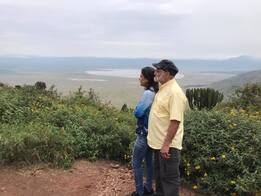
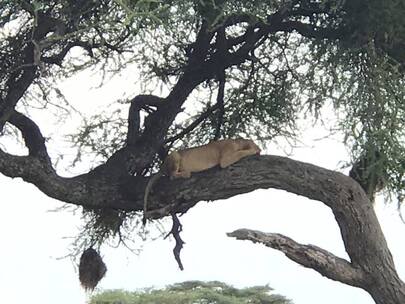
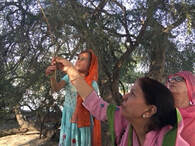
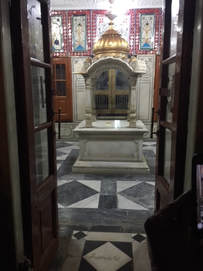
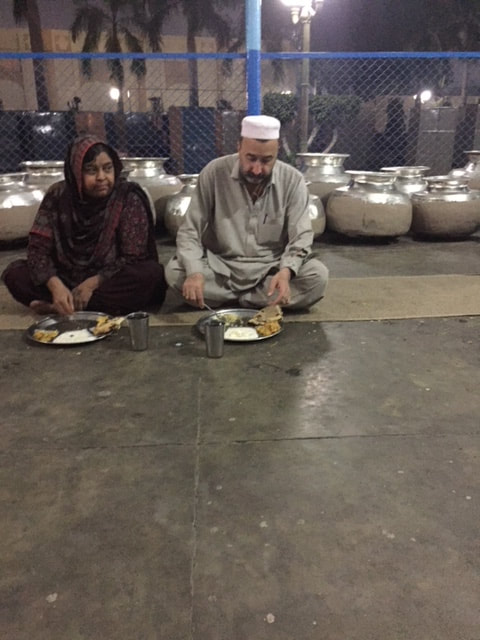
 RSS Feed
RSS Feed